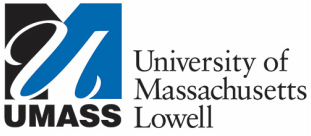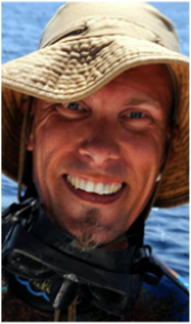
Dr. Nicolai Konow Principal Investigator
BSc., MSc.: U. Copenhagen; Ph. D.: James Cook University; Postdocs: Hofstra U., Johns Hopkins U., Brown U., Harvard U.
I use comparative experimental approaches to understand how form-function-mechanics relationships shape the evolution of animal jaw, tongue and limb systems. Early on, I explored the mechanical and ecological consequences of extra lower jaw joints in biting coral reef fishes. As a postdoc, I charted the evolution of independently evolved tongue bite systems in ancient fish groups. I also studied limb muscle mechanics in movements like bird landing and bat flight to probe questions about the functional implications of having muscle contractions controlling bone movements via springy tendons. My lab is launched with the goal of leveraging these lessons from limb muscle-tendon studies and gain a better understanding of food processing mechanics and feeding muscle physiology in animals including humans. Faculty profile | Google Scholar | Research Gate | Twitter
BSc., MSc.: U. Copenhagen; Ph. D.: James Cook University; Postdocs: Hofstra U., Johns Hopkins U., Brown U., Harvard U.
I use comparative experimental approaches to understand how form-function-mechanics relationships shape the evolution of animal jaw, tongue and limb systems. Early on, I explored the mechanical and ecological consequences of extra lower jaw joints in biting coral reef fishes. As a postdoc, I charted the evolution of independently evolved tongue bite systems in ancient fish groups. I also studied limb muscle mechanics in movements like bird landing and bat flight to probe questions about the functional implications of having muscle contractions controlling bone movements via springy tendons. My lab is launched with the goal of leveraging these lessons from limb muscle-tendon studies and gain a better understanding of food processing mechanics and feeding muscle physiology in animals including humans. Faculty profile | Google Scholar | Research Gate | Twitter
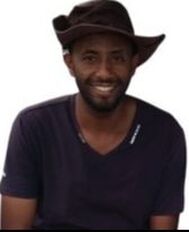
Yonas Tolosa Roba (MSc) PhD student
I am interested in the functional morphology of vertebrate animals and joined the KonowLab, which nicely fitted to my interest after completing a MSc degree in Comparative Vertebrate Morphology as an Erasmus scholar at University of Jena, Germany. My research examines the functional integration, biomechanics and muscle physiology of jaw and tongue movements during feeding, particularly focusing on lungfishes. I anticipate using a comparative approach to better understand the evolution of food processing associated with water-to-land transitions of feeding systems. Publications: Rhythmic chew cycles with distinct fast and slow phases are ancestral to gnathostomes. PMID: 37839454. Do salamanders chew? An X-ray reconstruction of moving morphology analysis of ambystomatid intraoral feeding behaviours. PMID: 37839445.
I am interested in the functional morphology of vertebrate animals and joined the KonowLab, which nicely fitted to my interest after completing a MSc degree in Comparative Vertebrate Morphology as an Erasmus scholar at University of Jena, Germany. My research examines the functional integration, biomechanics and muscle physiology of jaw and tongue movements during feeding, particularly focusing on lungfishes. I anticipate using a comparative approach to better understand the evolution of food processing associated with water-to-land transitions of feeding systems. Publications: Rhythmic chew cycles with distinct fast and slow phases are ancestral to gnathostomes. PMID: 37839454. Do salamanders chew? An X-ray reconstruction of moving morphology analysis of ambystomatid intraoral feeding behaviours. PMID: 37839445.
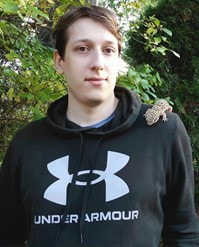
Brandon Reder PhD student
I earned my bachelor’s at Westfield State. As an undergraduate, I investigated the unique facultative zygodactyl foot anatomy of osprey (Pandion haliaetus). That research sparked my greater interest in avian form and function. Currently I am investigating the function of antagonist muscles in the legs of helmeted guinea fowl (Numida meleagris) during locomotive activities. As terrestrial birds are great models for bipedal locomotion, I hope findings from my research will provide new insights for human locomotion as well.
I earned my bachelor’s at Westfield State. As an undergraduate, I investigated the unique facultative zygodactyl foot anatomy of osprey (Pandion haliaetus). That research sparked my greater interest in avian form and function. Currently I am investigating the function of antagonist muscles in the legs of helmeted guinea fowl (Numida meleagris) during locomotive activities. As terrestrial birds are great models for bipedal locomotion, I hope findings from my research will provide new insights for human locomotion as well.
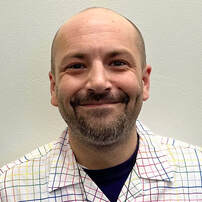
Brian Richard MSc student
I am very passionate about animals and about studying comparative biomechanics and morphology of feeding. After earning my bachelor's degree here at UML, I am continuing my research into complex food processing in fish and salamanders. My work investigates transitions in capturing and mechanically processing and transporting food in species that can do so aquatically and terrestrially to determine how function changes between environments. Using salamanders enables me to study these transitions in individuals as they metamorphose from an aquatic larval form into mature terrestrial adults.
Publication: Rhythmic chew cycles with distinct fast and slow phases are ancestral to gnathostomes. PMID: 37839454.
I am very passionate about animals and about studying comparative biomechanics and morphology of feeding. After earning my bachelor's degree here at UML, I am continuing my research into complex food processing in fish and salamanders. My work investigates transitions in capturing and mechanically processing and transporting food in species that can do so aquatically and terrestrially to determine how function changes between environments. Using salamanders enables me to study these transitions in individuals as they metamorphose from an aquatic larval form into mature terrestrial adults.
Publication: Rhythmic chew cycles with distinct fast and slow phases are ancestral to gnathostomes. PMID: 37839454.
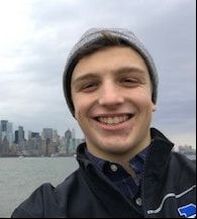
Sam DeLap, MSc candidate (BSc Biology, Bioinfo Conc. and Math, Immersive Scholar, Honors Thesis). I am a graduate student interested in computational approaches to muscle physiological data. I joined the lab in 2019 as an undergraduate who was interested in biomechanics because of my involvement in sports, specifically ice hockey. Now, I get to contribute to the research that helped me improve my own performance in high school. Currently, I am using my computational skill-set to reduce the complexity of in-vivo physiological datasets, specifically modeling how muscle pennation affects fibers contractions during movement. I am also working to provide fellow biologists with the pipelines they need to handle large datasets, which are increasingly common in 21st-Century science. I am developing an integrated 3D skeletal reconstruction pipeline that combines the XMAlab and XROMM pipelines and is aided by machine learning. Tweet me @SamDeLap
Publications: Bridging the muscle genome to phenome across multiple biological scales. PMID: 35288729.
Publications: Bridging the muscle genome to phenome across multiple biological scales. PMID: 35288729.
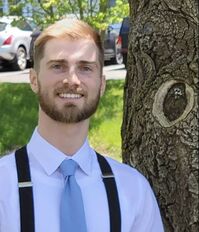
Warren Cohen Post-Bac researcher
Warren joined the lab after taking Biology of Muscle, and his work focuses on determining links between mammal diet and craniofacial muscle prominence and force production, measured by proxy of Physiological Cross-Sectional Area. This work is important as craniofacial muscles remain poorly studied compared to the skull, mandible, and hyoid. Our earlier work has found preliminary evidence for changes in muscle prominence being related to diet, but constrained by the phylogenetic history of mammals and Warren's research seeks to substantiate those findings.” Warren is currently working as a Post-Bac in the lab and preparing for dental school.
Warren joined the lab after taking Biology of Muscle, and his work focuses on determining links between mammal diet and craniofacial muscle prominence and force production, measured by proxy of Physiological Cross-Sectional Area. This work is important as craniofacial muscles remain poorly studied compared to the skull, mandible, and hyoid. Our earlier work has found preliminary evidence for changes in muscle prominence being related to diet, but constrained by the phylogenetic history of mammals and Warren's research seeks to substantiate those findings.” Warren is currently working as a Post-Bac in the lab and preparing for dental school.
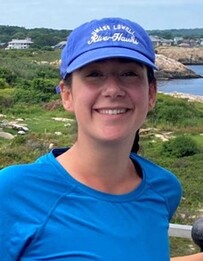
Meghan Spence Post-Bac researcher (KCS scholar, Honors student).
I joined the Konow Lab the summer after my sophomore year. My first independent project examined tongue movement during feeding in terrestrializing salamanders. Studying feeding kinematics from water-to-land introduced me to many tools, such as XROMM (X-ray Reconstruction of Moving Morphology), which allowed me to create animated skeletons of Axolotls feeding and extract kinematic movements. I then transitioned to a bigger project for my senior thesis where I am analyzing musculoskeletal kinematics of Axolotl feeding to differentiate intraoral behaviors. I graduated with my BS in general biology in May 2022 and recently published my first papers from the lab:
Publications: Do salamanders chew? An X-ray reconstruction of moving morphology analysis of ambystomatid intraoral feeding behaviours. PMID: 37839445. Rhythmic chew cycles with distinct fast and slow phases are ancestral to gnathostomes. PMID: 37839454
I joined the Konow Lab the summer after my sophomore year. My first independent project examined tongue movement during feeding in terrestrializing salamanders. Studying feeding kinematics from water-to-land introduced me to many tools, such as XROMM (X-ray Reconstruction of Moving Morphology), which allowed me to create animated skeletons of Axolotls feeding and extract kinematic movements. I then transitioned to a bigger project for my senior thesis where I am analyzing musculoskeletal kinematics of Axolotl feeding to differentiate intraoral behaviors. I graduated with my BS in general biology in May 2022 and recently published my first papers from the lab:
Publications: Do salamanders chew? An X-ray reconstruction of moving morphology analysis of ambystomatid intraoral feeding behaviours. PMID: 37839445. Rhythmic chew cycles with distinct fast and slow phases are ancestral to gnathostomes. PMID: 37839454
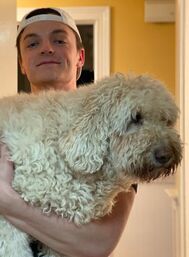
Devin Jenness Post-bac researcher
I am a senior pursuing a BSc in General Biology. I joined the lab after taking Dr. Konow’s class, Form Feeds Function, which sparked my interest in comparative anatomy and muscle physiology. Currently, I focus on the influence of mechanically challenging foods on force-length-activation properties in the superficial masseter muscle. I aim to apply this research in a clinical setting by evaluating the potential mechanisms of temporomandibular joint disorder and other common etiologies in the mammalian jaw system. I plan to continue my research in the Konow lab as a master's student and apply to medical school during this process.
I am a senior pursuing a BSc in General Biology. I joined the lab after taking Dr. Konow’s class, Form Feeds Function, which sparked my interest in comparative anatomy and muscle physiology. Currently, I focus on the influence of mechanically challenging foods on force-length-activation properties in the superficial masseter muscle. I aim to apply this research in a clinical setting by evaluating the potential mechanisms of temporomandibular joint disorder and other common etiologies in the mammalian jaw system. I plan to continue my research in the Konow lab as a master's student and apply to medical school during this process.
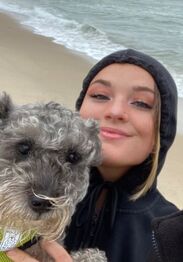
Tori Flint MSc student researcher
Being a biology major has exposed me to parts of the world I have always been curious about, particularly animals. I have an interest in animal research and how their role within their environment can be seen through different feeding and movement patterns. In the future, I would love to explore the diversity of life. Through the Konow lab, these interests can be explored and questioned to learn more about the natural biological world I have always been interested in. Not only is there an exemplary team to collaborate with but also many resources available to achieve my goals.
Being a biology major has exposed me to parts of the world I have always been curious about, particularly animals. I have an interest in animal research and how their role within their environment can be seen through different feeding and movement patterns. In the future, I would love to explore the diversity of life. Through the Konow lab, these interests can be explored and questioned to learn more about the natural biological world I have always been interested in. Not only is there an exemplary team to collaborate with but also many resources available to achieve my goals.
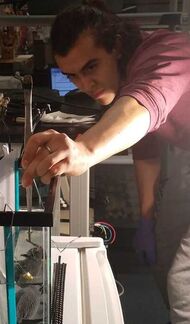
Mateo Rull Undergraduate researcher (Honors scholar, KCS and Leadership-alliance Fellow)
I am a third-year undergrad pursuing a double-degree in Biology and Psychology. Having emigrated from Mexico in 2016 to attend UMass Lowell and become a doctor, I joined the lab and fell in love with the study of animal movement, especially as it relates to prey-predator interactions. I am specifically interested in how tendons, ligaments, and muscles orchestrate the necessary functional feats to efficiently process food and recycle energy through elastic recoil action. Although medical school still is attractive, I am very happy pursuing my own, independent research, and hope to continue doing so for a long time. By being involved in the lab, I have re-oriented my career aspirations and, in many ways, enriched my undergraduate experience. Tweet me @mateorull to talk science. Publications: Elastic recoil action amplifies jaw closing speed in an aquatic feeding salamander. PMID: 32429804. Thermal Sensitivity of Axolotl Feeding Behaviors. PMID: 34117757. Do salamanders chew? An X-ray reconstruction of moving morphology analysis of ambystomatid intraoral feeding behaviours. PMID: 37839445. Rhythmic chew cycles with distinct fast and slow phases are ancestral to gnathostomes. PMID: 37839454
I am a third-year undergrad pursuing a double-degree in Biology and Psychology. Having emigrated from Mexico in 2016 to attend UMass Lowell and become a doctor, I joined the lab and fell in love with the study of animal movement, especially as it relates to prey-predator interactions. I am specifically interested in how tendons, ligaments, and muscles orchestrate the necessary functional feats to efficiently process food and recycle energy through elastic recoil action. Although medical school still is attractive, I am very happy pursuing my own, independent research, and hope to continue doing so for a long time. By being involved in the lab, I have re-oriented my career aspirations and, in many ways, enriched my undergraduate experience. Tweet me @mateorull to talk science. Publications: Elastic recoil action amplifies jaw closing speed in an aquatic feeding salamander. PMID: 32429804. Thermal Sensitivity of Axolotl Feeding Behaviors. PMID: 34117757. Do salamanders chew? An X-ray reconstruction of moving morphology analysis of ambystomatid intraoral feeding behaviours. PMID: 37839445. Rhythmic chew cycles with distinct fast and slow phases are ancestral to gnathostomes. PMID: 37839454

Jill Daniels MSc Project Student
I enrolled at UML for my BSc in Biology and decided to add an MSc in Biology & Biotechnology. As part of the Konow Lab, I’ve helped spearhead a project on lungfish strike velocity, specifically exploring the relationship between prey motility and strike speed. A previous study suggested that captive lungfish are particularly slow feeders, in contrast to our data. My other biology interests concern immunological functions, and specifically how microorganisms influence the immune system. When not in the lab, I can be found reading, taking care of plants, or telling my cat to leave my plants alone (he has his own!).
I enrolled at UML for my BSc in Biology and decided to add an MSc in Biology & Biotechnology. As part of the Konow Lab, I’ve helped spearhead a project on lungfish strike velocity, specifically exploring the relationship between prey motility and strike speed. A previous study suggested that captive lungfish are particularly slow feeders, in contrast to our data. My other biology interests concern immunological functions, and specifically how microorganisms influence the immune system. When not in the lab, I can be found reading, taking care of plants, or telling my cat to leave my plants alone (he has his own!).
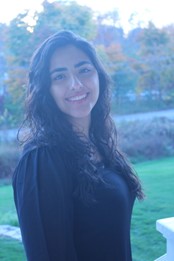
Amber Abu-Zahra Undergraduate immersive scholar
I joined the KonowLab in the Summer of 2022 through an Immersive Scholar’s (UROC) Award. Being part of the lab is a great experience as a premedical student, as it allows me to learn about experimental methods while learning about mammalian jaw muscle physiology. I started with studying the relationship of muscle activation and force production in the jaw as food hardness increases. Currently, I work on assessing the stability of the jaw joint in various rodent species by extracting kinematics through X-Ray reconstruction of Moving Morphology (XROMM). Both studies stand to increase our knowledge about the craniofacial system in general, and particularly about what causes instability around the temporomandibular joint, which may be characteristic of problems with unknown causes, including temporomandibular disorders.
I joined the KonowLab in the Summer of 2022 through an Immersive Scholar’s (UROC) Award. Being part of the lab is a great experience as a premedical student, as it allows me to learn about experimental methods while learning about mammalian jaw muscle physiology. I started with studying the relationship of muscle activation and force production in the jaw as food hardness increases. Currently, I work on assessing the stability of the jaw joint in various rodent species by extracting kinematics through X-Ray reconstruction of Moving Morphology (XROMM). Both studies stand to increase our knowledge about the craniofacial system in general, and particularly about what causes instability around the temporomandibular joint, which may be characteristic of problems with unknown causes, including temporomandibular disorders.

Praneeth Abburi Undergraduate immersive scholar
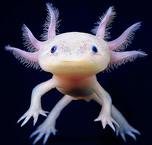
Samuel Angelli-Nichols Undergraduate Researcher
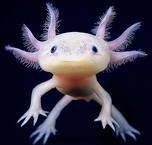
Gabriel Crowell Undergraduate Researcher
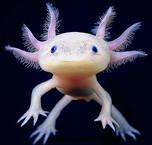
Ripley Dybowski Undergraduate Researcher
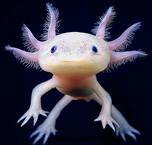
- - This could be you - - Undergraduate Researcher
Lab visitors
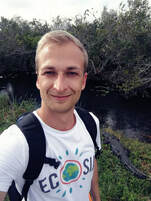
Daniel Schwarz – PhD student at Friedrich Schiller University Jena (Thesis Advisor; Egon Heiss)
I study feeding (processing) in amphibians. I determine the framework conditions of processing in various salamanders combining contemporary 3D and classical ex vivo morphological studies with x-ray and high-speed kinematics. Integrating form, function and phylogeny, I strive to compile a theory of early tetrapod and caudate processing evolution. My cooperation with the KonowLab has opened up new possibilities including studying species indigenous to North America, learning new techniques, getting in touch with other scientists and access to scientific equipment at two universities. Most important, Dr. Konow continues to provide scientific input and is a source of inspiration for our Publications: (1) Schwarz D, Konow N, Heiss E (2020) A salamander that chews with complex, three-dimensional mandible movements. J. Exp. Biol. doi.org/10.1242/jeb.220749. (2) Heiss E, Schwarz D, Konow N (2019) Chewing or not? Intraoral food processing in a salamandrid newt. J. Exp. Biol. doi.org/10.1242/jeb.189886.
I study feeding (processing) in amphibians. I determine the framework conditions of processing in various salamanders combining contemporary 3D and classical ex vivo morphological studies with x-ray and high-speed kinematics. Integrating form, function and phylogeny, I strive to compile a theory of early tetrapod and caudate processing evolution. My cooperation with the KonowLab has opened up new possibilities including studying species indigenous to North America, learning new techniques, getting in touch with other scientists and access to scientific equipment at two universities. Most important, Dr. Konow continues to provide scientific input and is a source of inspiration for our Publications: (1) Schwarz D, Konow N, Heiss E (2020) A salamander that chews with complex, three-dimensional mandible movements. J. Exp. Biol. doi.org/10.1242/jeb.220749. (2) Heiss E, Schwarz D, Konow N (2019) Chewing or not? Intraoral food processing in a salamandrid newt. J. Exp. Biol. doi.org/10.1242/jeb.189886.
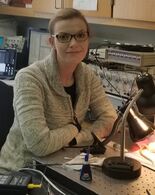
Stephanie Ross – PhD student at Simon Frasier University (Thesis Advisor; James Wakeling)
I am a PhD student from Simon Fraser University and my research focuses on examining the effects of muscle mass on contractile performance. As most of my research on this topic has involved building and using computational models of muscle, visiting the Konow Lab was a great opportunity for me to not only learn experimental techniques from researchers with extensive experience conducting animal experiments, but also to validate my muscle models and strengthen our understanding of muscle function.
Publication: Ross SA, Rimkus B, Konow N, Biewener AA & Wakeling JM (2020) Added mass in rat plantaris muscle causes a reduction in mechanical work. J. Exp. Biol. 224410.
I am a PhD student from Simon Fraser University and my research focuses on examining the effects of muscle mass on contractile performance. As most of my research on this topic has involved building and using computational models of muscle, visiting the Konow Lab was a great opportunity for me to not only learn experimental techniques from researchers with extensive experience conducting animal experiments, but also to validate my muscle models and strengthen our understanding of muscle function.
Publication: Ross SA, Rimkus B, Konow N, Biewener AA & Wakeling JM (2020) Added mass in rat plantaris muscle causes a reduction in mechanical work. J. Exp. Biol. 224410.

Jolan Theriault – PhD student at U. British Columbia (Thesis Advisor; Dr. Doug Altshuler)
I am a PhD student in Dr. Doug Altshuler’s lab at the University of British Columbia. I am interested in biomechanics and muscle function, specifically relating to avian flight. Previously, I examined the function of one of the intrinsic wing muscles (the humerotriceps) of the pigeon using an in situ work loop approach. My visits to the Konow lab follow up on the results of this study. We use in vivo and in situ approaches to probe some of the questions that arose regarding the effects of whole muscle-tendon strain, tendon properties, and muscle activation patterns on the function of avian wing muscles.
I am a PhD student in Dr. Doug Altshuler’s lab at the University of British Columbia. I am interested in biomechanics and muscle function, specifically relating to avian flight. Previously, I examined the function of one of the intrinsic wing muscles (the humerotriceps) of the pigeon using an in situ work loop approach. My visits to the Konow lab follow up on the results of this study. We use in vivo and in situ approaches to probe some of the questions that arose regarding the effects of whole muscle-tendon strain, tendon properties, and muscle activation patterns on the function of avian wing muscles.
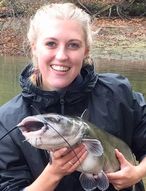
Kelsie Pos - Post Bac, visiting researcher from Knox College (Thesis Advisor; Dr. Nicholas Gidmark)
I graduated with honors in Biology from Knox College in Galesburg, Illinois where I studied fish feeding. For my honors thesis, I CT scanned 98% of North American minnow diversity to investigate the influence of phylogeny and diet on pharyngeal jaw structure. During my lab visit, I work on the feeding mechanics of aquatic salamanders. I plan to do my PhD in preparation for a teaching career.
I graduated with honors in Biology from Knox College in Galesburg, Illinois where I studied fish feeding. For my honors thesis, I CT scanned 98% of North American minnow diversity to investigate the influence of phylogeny and diet on pharyngeal jaw structure. During my lab visit, I work on the feeding mechanics of aquatic salamanders. I plan to do my PhD in preparation for a teaching career.
Lab alumni
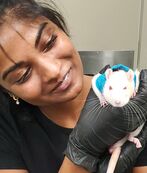
Kavya Katugam-Dechene PhD. Postdoctoral research associate
Kavya joined our lab mid 2023, on our NSF award to study rodent bite force generation, after completing a PhD in the Rubenson Lab at Penn State, and surviving a summer of several award-winning presentations at biomechanics meetings for her thesis work. Following a whirlwind experience on our project on rat biting, Kavya accepted a job in industry as a staff biomechanist.
Kavya joined our lab mid 2023, on our NSF award to study rodent bite force generation, after completing a PhD in the Rubenson Lab at Penn State, and surviving a summer of several award-winning presentations at biomechanics meetings for her thesis work. Following a whirlwind experience on our project on rat biting, Kavya accepted a job in industry as a staff biomechanist.
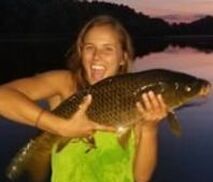
Barbora Rimkus MSc.
I joined the Konow lab as a senior working towards my Bachelor’s degree in Biology. Nature and animals have always been at the heart of my interest. Dr. Konow lets me explore and experiment within the field of biological movements in animals, to determine patterns and relationships between biomechanical processes. Currently, I focus on the chewing mechanism in rats, specifically, examining the force-length-activation dynamics of masseter, digastric, and pterygoid muscles. I assist with in vivo experiments during which a rat is monitored and fed foods of different hardness and toughness and I also assist with the subsequent in situ experiment. This project intrigues me because finding and understanding the mechanisms behind these patterns and relationships can be used to address issues regarding human health. My goal is to attend a graduate school where I can research ways to improve health and/or living conditions by means of biological engineering. Twitter
Publications: (1) Sundar S, Rimkus B, Meemaduma PS, deLap S, LaFave N, Racca AW, Hettige P, Moore J, Gage M, Shehaj A, Konow N. (2022 )Bridging the muscle genome to phenome across multiple biological scales. J Exp Biol. doi: 10.1242/jeb.243630. (2) Ross SA, Rimkus B, Konow N, Biewener AA & Wakeling JM (2020) Added mass in rat plantaris muscle causes a reduction in mechanical work. J. Exp. Biol. 224410. (3) Putra C, Rimkus B, Shehaj A, Gage M, Konow N, Mangano K. (2019) Impact of dietary protein source on muscle performance: An in-vivo behavioral assay. Curr. Devt. Nutr. 3 (suppl. 1), nzz033. doi.org/10.1093/cdn/nzz033.OR26-05-19. (4) Bridging the muscle genome to phenome across multiple biological scales. PMID: 35288729.
I joined the Konow lab as a senior working towards my Bachelor’s degree in Biology. Nature and animals have always been at the heart of my interest. Dr. Konow lets me explore and experiment within the field of biological movements in animals, to determine patterns and relationships between biomechanical processes. Currently, I focus on the chewing mechanism in rats, specifically, examining the force-length-activation dynamics of masseter, digastric, and pterygoid muscles. I assist with in vivo experiments during which a rat is monitored and fed foods of different hardness and toughness and I also assist with the subsequent in situ experiment. This project intrigues me because finding and understanding the mechanisms behind these patterns and relationships can be used to address issues regarding human health. My goal is to attend a graduate school where I can research ways to improve health and/or living conditions by means of biological engineering. Twitter
Publications: (1) Sundar S, Rimkus B, Meemaduma PS, deLap S, LaFave N, Racca AW, Hettige P, Moore J, Gage M, Shehaj A, Konow N. (2022 )Bridging the muscle genome to phenome across multiple biological scales. J Exp Biol. doi: 10.1242/jeb.243630. (2) Ross SA, Rimkus B, Konow N, Biewener AA & Wakeling JM (2020) Added mass in rat plantaris muscle causes a reduction in mechanical work. J. Exp. Biol. 224410. (3) Putra C, Rimkus B, Shehaj A, Gage M, Konow N, Mangano K. (2019) Impact of dietary protein source on muscle performance: An in-vivo behavioral assay. Curr. Devt. Nutr. 3 (suppl. 1), nzz033. doi.org/10.1093/cdn/nzz033.OR26-05-19. (4) Bridging the muscle genome to phenome across multiple biological scales. PMID: 35288729.
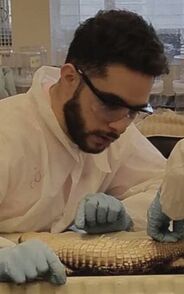
Joseph Bechara MSc.
I joined the Konow Lab in fall 2019, and soon found it was the perfect place to combine my interests in anatomy, muscle physiology, and vertebrate evolution. My research combines phylogenetic supertree approaches, meta-analyses, and dissections to establish how the force production potential (gauged by muscle physiological cross-sectional area) of craniofascial muscles evolved in concert with dietary shifts in North American mammals. Given my passion for research and understanding more about the species that inhabit Earth, the Konow lab provides the necessary framework to empower myself in the pursuit of knowledge and a future in the field of research.
Publication: Bechara J. Grossnickle D. & Konow N. (in prep). Relationships between mammalian craniofacial muscle morphology and dietary specializations.
I joined the Konow Lab in fall 2019, and soon found it was the perfect place to combine my interests in anatomy, muscle physiology, and vertebrate evolution. My research combines phylogenetic supertree approaches, meta-analyses, and dissections to establish how the force production potential (gauged by muscle physiological cross-sectional area) of craniofascial muscles evolved in concert with dietary shifts in North American mammals. Given my passion for research and understanding more about the species that inhabit Earth, the Konow lab provides the necessary framework to empower myself in the pursuit of knowledge and a future in the field of research.
Publication: Bechara J. Grossnickle D. & Konow N. (in prep). Relationships between mammalian craniofacial muscle morphology and dietary specializations.
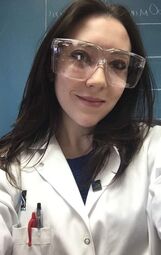
Michaela Burns MSc.
I am graduating with a master’s degree in Biology. During my first year as a MSc student, I took Dr. Konow’s class, Form Feeds Function as I have a deep interest in animal science and medicine. The class did not disappoint! I was able to make connections with Massachusetts Fish and Game, Zoo New England, and local wild-life rehabilitators, which aided my educational journey. I had also gained a keen interest in furthering my research and laboratory experience and was fortunate enough to join the lab. I study myosin isoforms of craniofacial and limb muscles. Through my new connections, I obtain mammal muscles without compromising my personal ethics since specimen, such as road -kill, were donated. I am on the pre-veterinary track and will be taking time off after graduation to work, study efficiently for my entrance exams, and finish my experiments. Michaela is currently in Veterinary school in Melbourne Australia.
I am graduating with a master’s degree in Biology. During my first year as a MSc student, I took Dr. Konow’s class, Form Feeds Function as I have a deep interest in animal science and medicine. The class did not disappoint! I was able to make connections with Massachusetts Fish and Game, Zoo New England, and local wild-life rehabilitators, which aided my educational journey. I had also gained a keen interest in furthering my research and laboratory experience and was fortunate enough to join the lab. I study myosin isoforms of craniofacial and limb muscles. Through my new connections, I obtain mammal muscles without compromising my personal ethics since specimen, such as road -kill, were donated. I am on the pre-veterinary track and will be taking time off after graduation to work, study efficiently for my entrance exams, and finish my experiments. Michaela is currently in Veterinary school in Melbourne Australia.
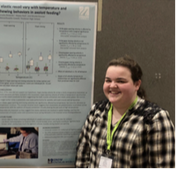
Caitlin Panessiti Undergraduate researcher (UROC, and KCS scholar, Honors scholar)
I joined the Konow Lab in the summer of 2019 through an Immersive Scholar’s (UROC) award. I entered the lab much like I entered UMass Lowell, with only a vague idea of what I wanted my career path to look like. I have always had a strong interest in the musculoskeletal system, and had tentative plans of going to medical or PA school to work in orthopedics after my undergrad. I have also always had a deep love for animals, so I quickly fell in love with the idea of combining two of my strongest interests by studying animal movement, and especially animal feeding systems. Shortly after joining the Lab, I was able to start my own project on the contribution of elastic elements, such as tendons, in the feeding systems of axolotls. Since joining the lab, I have collected and analyzed the data needed for my project and, after presenting it several times, including at SICB2020, I am now writing it up as my first publication. The past year of working in the lab has taught me a lot about the ins and outs of working in a research lab, but most importantly it has also helped me gain a different perspective on what I might want to pursue after my undergrad. Tweet me @CPanessiti
Publication: Thermal Sensitivity of Axolotl Feeding Behaviors. PubMed PMID: 34117757.
I joined the Konow Lab in the summer of 2019 through an Immersive Scholar’s (UROC) award. I entered the lab much like I entered UMass Lowell, with only a vague idea of what I wanted my career path to look like. I have always had a strong interest in the musculoskeletal system, and had tentative plans of going to medical or PA school to work in orthopedics after my undergrad. I have also always had a deep love for animals, so I quickly fell in love with the idea of combining two of my strongest interests by studying animal movement, and especially animal feeding systems. Shortly after joining the Lab, I was able to start my own project on the contribution of elastic elements, such as tendons, in the feeding systems of axolotls. Since joining the lab, I have collected and analyzed the data needed for my project and, after presenting it several times, including at SICB2020, I am now writing it up as my first publication. The past year of working in the lab has taught me a lot about the ins and outs of working in a research lab, but most importantly it has also helped me gain a different perspective on what I might want to pursue after my undergrad. Tweet me @CPanessiti
Publication: Thermal Sensitivity of Axolotl Feeding Behaviors. PubMed PMID: 34117757.
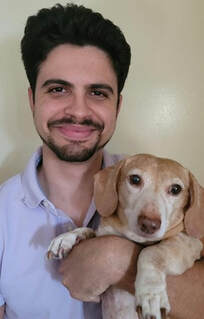
Enrique Santos Undergraduate researcher
I am pursuing a degree in biotechnology. Ever since I took my first anatomy and physiology class back in high school, I knew I wanted to explore this topic more. It amazed me to get hands-on experience with specimens and study the many ways nature has evolved to deal with problems, whether it be in locomotion or feeding. Taking Dr Konow's Forms Feeds and Function class has reintroduced me to this topic and fueled my curiosity. It has led to me researching with Dr Konow the comparative anatomy of carnivore vs herbivore craniofacial muscles.
I am pursuing a degree in biotechnology. Ever since I took my first anatomy and physiology class back in high school, I knew I wanted to explore this topic more. It amazed me to get hands-on experience with specimens and study the many ways nature has evolved to deal with problems, whether it be in locomotion or feeding. Taking Dr Konow's Forms Feeds and Function class has reintroduced me to this topic and fueled my curiosity. It has led to me researching with Dr Konow the comparative anatomy of carnivore vs herbivore craniofacial muscles.

Joel Rozen MSc student
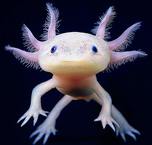
Kyle McCarty Undergraduate researcher
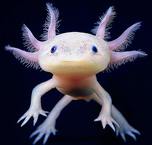
Lukacz Kornilowicz Undergraduate researcher
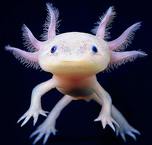
Maya (Ummammah) Rizvan Undergraduate researcher (UROC scholar)
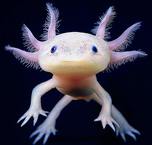
Linh Nguyen Undergraduate researcher (Computer Science)
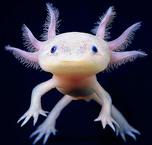
Alyssa Albert Undergraduate researcher (work-study)

Trushti Patel Undergraduate Researcher
Trushti joined the lab motivated by the potential of our research to have a significant effect in the basic scientific as well as the biomedical world. For her Honors research project, she examined the movements of bones and muscles in the jaw and tongue of rats feeding on foods of varying hardness. In 2018, Trushti gained entry to the New England School of Osteopathic Medicine, her first choice.
Trushti joined the lab motivated by the potential of our research to have a significant effect in the basic scientific as well as the biomedical world. For her Honors research project, she examined the movements of bones and muscles in the jaw and tongue of rats feeding on foods of varying hardness. In 2018, Trushti gained entry to the New England School of Osteopathic Medicine, her first choice.
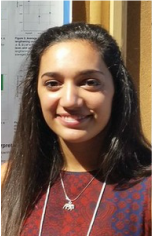
Alexandra Collias Undergraduate Researcher (Hons, UROC)
As a freshman, Alex won a UML Co-op scholarship to work with Dr. Konow during the summer of 2016 at the Concord Field station. She studied the contractile behavior of the rat medial gastrocnemius and found that this hind limb muscle varies its length change trajectory during stance between uphill, level and downhill galloping, consistent with changing priorities on motor, spring and brake function respectively. Alex presented her research poster at the 2016 UML Co-op research symposium and earned a stipend to bring an expanded version of her poster to the 2017 meeting for the Society of Integrative and Comparative Biology in New Orleans, LA. Alex is currently a PhD student in the Steinel lab at UML
Publication: Konow N, Collias A, Biewener AA. (2020) In vivo dynamic shape-changes in the medial gastrocnemius during rat locomotion are force dependent. Frontiers in Physiology. 11:143. doi.org/10.3389/fphys.2020.00143.
As a freshman, Alex won a UML Co-op scholarship to work with Dr. Konow during the summer of 2016 at the Concord Field station. She studied the contractile behavior of the rat medial gastrocnemius and found that this hind limb muscle varies its length change trajectory during stance between uphill, level and downhill galloping, consistent with changing priorities on motor, spring and brake function respectively. Alex presented her research poster at the 2016 UML Co-op research symposium and earned a stipend to bring an expanded version of her poster to the 2017 meeting for the Society of Integrative and Comparative Biology in New Orleans, LA. Alex is currently a PhD student in the Steinel lab at UML
Publication: Konow N, Collias A, Biewener AA. (2020) In vivo dynamic shape-changes in the medial gastrocnemius during rat locomotion are force dependent. Frontiers in Physiology. 11:143. doi.org/10.3389/fphys.2020.00143.
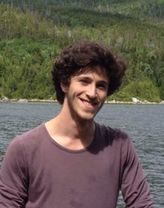
Jacob Solomon Undergraduate Researcher (Post Bac)
Jacob was a computer science and English major who won an Honors stipend as a rising junior to work in the Konow lab. He focused on creating a 3D digital reconstruction of lungfish and salamander chewing using X-ray Reconstruction of Moving Morphology (XROMM). His project sought to unravel the potential contribution of elastic recoil to jaw adductor function as these groups chew.
Publication: Rull M, Solomon J, Konow N (2020) Elastic recoil drives jaw closure in an aquatic-feeding salamander. Proceedings of the Royal Society Series B. doi.org/10.1098/rspb.2020.0428
Jacob was a computer science and English major who won an Honors stipend as a rising junior to work in the Konow lab. He focused on creating a 3D digital reconstruction of lungfish and salamander chewing using X-ray Reconstruction of Moving Morphology (XROMM). His project sought to unravel the potential contribution of elastic recoil to jaw adductor function as these groups chew.
Publication: Rull M, Solomon J, Konow N (2020) Elastic recoil drives jaw closure in an aquatic-feeding salamander. Proceedings of the Royal Society Series B. doi.org/10.1098/rspb.2020.0428

Carla Marbelt-Rodriguez Undergraduate Researcher
I am a junior Biological Sciences major. Research is fascinating because you are contributing to new discoveries while also applying everything you have learned in the classroom. Dr. Konow’s lab was best for me because of different interesting projects he has pertaining to biomedical and evolutionary research. Carla is currently analyzing chewing EMG measurements from Axolotl cranial muscles. Carla is currently an Intake Coordinator at the Massachusetts Attorney General's Office.
I am a junior Biological Sciences major. Research is fascinating because you are contributing to new discoveries while also applying everything you have learned in the classroom. Dr. Konow’s lab was best for me because of different interesting projects he has pertaining to biomedical and evolutionary research. Carla is currently analyzing chewing EMG measurements from Axolotl cranial muscles. Carla is currently an Intake Coordinator at the Massachusetts Attorney General's Office.
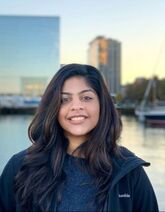
Krina Shah Undergraduate researcher
I am an undergraduate student pursuing a Biology degree with a psychology minor. The Konow lab is the best "home" for me because I am interested in muscle physiology. I would be able to apply this in the future as I hope to be an orthopedic physical therapist. Right now, I am focusing on how muscle contractions might impact ecological transitions. I am excited to be in this lab and discover so many possibilities that could change the way we view biology. Krina is currently a PT Graduate student at the MGH institute of Health Professions
I am an undergraduate student pursuing a Biology degree with a psychology minor. The Konow lab is the best "home" for me because I am interested in muscle physiology. I would be able to apply this in the future as I hope to be an orthopedic physical therapist. Right now, I am focusing on how muscle contractions might impact ecological transitions. I am excited to be in this lab and discover so many possibilities that could change the way we view biology. Krina is currently a PT Graduate student at the MGH institute of Health Professions
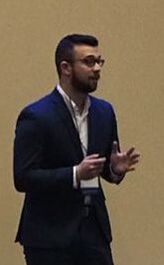
Andrea Shehaj Undergraduate Researcher (Honors scholar, BaccMD fellow)
I am a rising senior pursuing a degree in Biological Sciences with a minor in Public Health. I joined the Konow Lab in 2018 after realizing how muscle physiology research could further my premedical career as an aspiring physician while simultaneously allowing me to immerse myself in experimental research. In the last two and a half years I have been involved in a comparative study analyzing the effect of fiber type and architecture on muscle mechanical properties such as stress, strain, power production, and work generation. Additionally, I have looked at the effects of protein origin (diet) and eccentric exercise on muscle performance. I will be completing my undergraduate honors thesis in the Konow Lab. Tweet me @ Andrea_milan21.
Publication: Sundar S, Rimkus B, Meemaduma PS, deLap S, LaFave N, Racca AW, Hettige P, Moore J, Gage M, Shehaj A, Konow N. (2022 ) Bridging the muscle genome to phenome across multiple biological scales. J Exp Biol. doi: 10.1242/jeb.243630.
Andrea is currently a research assistant in the Kim group at Boston Children's Hospital.
I am a rising senior pursuing a degree in Biological Sciences with a minor in Public Health. I joined the Konow Lab in 2018 after realizing how muscle physiology research could further my premedical career as an aspiring physician while simultaneously allowing me to immerse myself in experimental research. In the last two and a half years I have been involved in a comparative study analyzing the effect of fiber type and architecture on muscle mechanical properties such as stress, strain, power production, and work generation. Additionally, I have looked at the effects of protein origin (diet) and eccentric exercise on muscle performance. I will be completing my undergraduate honors thesis in the Konow Lab. Tweet me @ Andrea_milan21.
Publication: Sundar S, Rimkus B, Meemaduma PS, deLap S, LaFave N, Racca AW, Hettige P, Moore J, Gage M, Shehaj A, Konow N. (2022 ) Bridging the muscle genome to phenome across multiple biological scales. J Exp Biol. doi: 10.1242/jeb.243630.
Andrea is currently a research assistant in the Kim group at Boston Children's Hospital.
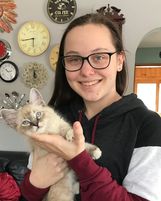
Caitlyn Moore Undergraduate Researcher
Caitlyn is a freshman Psychology major who developed her love of biology from her father as she grew up surrounded by research in his lab. Her exposure to research intrigued her to begin her own research despite just starting college. Dr. Konow’s lab is perfect for Caitlyn to start her research because she is surrounded by peers who are always supportive and helpful. Caitlyn hopes to gain more research experience and eventually begin her own research project.
Caitlyn is a freshman Psychology major who developed her love of biology from her father as she grew up surrounded by research in his lab. Her exposure to research intrigued her to begin her own research despite just starting college. Dr. Konow’s lab is perfect for Caitlyn to start her research because she is surrounded by peers who are always supportive and helpful. Caitlyn hopes to gain more research experience and eventually begin her own research project.

Clarice Bouvier Undergraduate Researcher (Hons, UROC)
Clarice is a sophomore Biology major who won an Undergraduate Research Opportunities and Collaborations (UROC) award, which allowed her to join Dr. Konow’s lab during the summer of 2018. Her interests lie in organismal, ecological and evolutionary biology, She currently studies how coordinated movements of the jaw and tongue help control food position inside the mouth during chewing in various aquatic animals, including bichirs, axolotls and Amphiuma. Clarice is currently a doctoral student at the New England College of Optometry.
Clarice is a sophomore Biology major who won an Undergraduate Research Opportunities and Collaborations (UROC) award, which allowed her to join Dr. Konow’s lab during the summer of 2018. Her interests lie in organismal, ecological and evolutionary biology, She currently studies how coordinated movements of the jaw and tongue help control food position inside the mouth during chewing in various aquatic animals, including bichirs, axolotls and Amphiuma. Clarice is currently a doctoral student at the New England College of Optometry.
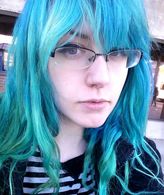
Erika Giuffrida Undergraduate Researcher
Erica joined the lab in January 2017. A self-confessed "typical Biology student" she grew up catching and observing anything that moved. Currently a UML sophomore, Erika was spearheading care for our animals and also worked as animal caretaker in our department's main animal facility. She left the lab for an internship at Andover Animal Hospital and is now a technician in UML;s Animal Care Facility.
Erica joined the lab in January 2017. A self-confessed "typical Biology student" she grew up catching and observing anything that moved. Currently a UML sophomore, Erika was spearheading care for our animals and also worked as animal caretaker in our department's main animal facility. She left the lab for an internship at Andover Animal Hospital and is now a technician in UML;s Animal Care Facility.
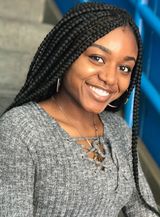
Princess Paul Undergraduate work-study
I am currently a freshman pursuing my BSc in Biology. As a child, I was intrigued by evolution in regards to present day animals. Back in Africa, I’d sneak out of class and go to the science department just to feed the fishes, rats and birds. I was fascinated by these creatures and often wondered how they came about. Dr, Konow’s lab is ideal for me because his research on food processing and muscle-tendon function could help me better understand evolution and have a significant effect in finding cures to major human diseases. Someday, I hope to acquire more research experience and eventually begin my own research.
I am currently a freshman pursuing my BSc in Biology. As a child, I was intrigued by evolution in regards to present day animals. Back in Africa, I’d sneak out of class and go to the science department just to feed the fishes, rats and birds. I was fascinated by these creatures and often wondered how they came about. Dr, Konow’s lab is ideal for me because his research on food processing and muscle-tendon function could help me better understand evolution and have a significant effect in finding cures to major human diseases. Someday, I hope to acquire more research experience and eventually begin my own research.
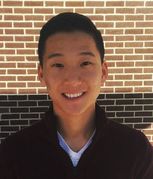
Benjamin Pacek Undergraduate Researcher
Ben joined the lab with an interest in muscles of the hand and his current project seeks to measure in vivo force-velocity properties from finger flexors in humans that either have routine finger use, or exceptional finger training, such as for instance guitar players.
Ben joined the lab with an interest in muscles of the hand and his current project seeks to measure in vivo force-velocity properties from finger flexors in humans that either have routine finger use, or exceptional finger training, such as for instance guitar players.

Timothe F. Martin Undergraduate Researcher
Tim embarked on a Youtube-based study of chewing rhythmicity. He still watches animals chew on Youtube but ended up graduating from UML as a business major.
Tim embarked on a Youtube-based study of chewing rhythmicity. He still watches animals chew on Youtube but ended up graduating from UML as a business major.
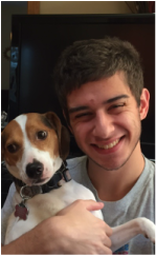
Jeffrey Sakakeeney Undergraduate Researcher
As a sophomore biology major, during the summer of 2016, Jeff started working with Dr. Konow at the Concord field Station. He recalls this time as “an exciting and eye-opening experience for an undergraduate”. Jeff assisted with research on the rat medial gastrocnemius muscle and monitored vitals and anesthesia during isolated muscle procedures. He went on to work with Dr. Konow on x-ray based reconstruction of mandibular symphysis mechanics. Jeff’s other interests include video games, anime, and his dog Sophia (left), a beagle mix and the undisputed love of his life. Prior to Umass Lowell, Jeff attended North Andover High school (MA), where a sophomore anatomy class forged his interests in biology. After two UML years, Jeff moved to Merrimack Community College.
As a sophomore biology major, during the summer of 2016, Jeff started working with Dr. Konow at the Concord field Station. He recalls this time as “an exciting and eye-opening experience for an undergraduate”. Jeff assisted with research on the rat medial gastrocnemius muscle and monitored vitals and anesthesia during isolated muscle procedures. He went on to work with Dr. Konow on x-ray based reconstruction of mandibular symphysis mechanics. Jeff’s other interests include video games, anime, and his dog Sophia (left), a beagle mix and the undisputed love of his life. Prior to Umass Lowell, Jeff attended North Andover High school (MA), where a sophomore anatomy class forged his interests in biology. After two UML years, Jeff moved to Merrimack Community College.
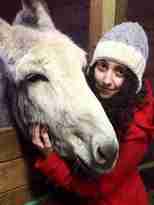
Victoria Arakelian Undergraduate Researcher
As a freshman Biology major and a member of the Honors College at UMass Lowell, Victoria joined the Konow Lab to test out some of her research interests, including the evolution of tetrapods and the biomechanics of muscle mechanics, flight, and feeding. She is currently testing out other waters.
As a freshman Biology major and a member of the Honors College at UMass Lowell, Victoria joined the Konow Lab to test out some of her research interests, including the evolution of tetrapods and the biomechanics of muscle mechanics, flight, and feeding. She is currently testing out other waters.
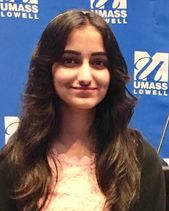
Surbhi Mavi Undergraduate Researcher
I am a junior (Biology major) and an international student from Greater Noida, India. I aim to go to Harvard Medical School and become an excellent physician. I believe that research is an inseparable branch of medicine, and it is only due to this field that medicine exists. Before dreaming of being a doctor, I have always wanted to perform research and know the vast possibilities that science could provide to humanity. Dr. Konow introduced his research in my freshman seminar and I became interested in knowing more. I am excited to be in his lab as I want to learn about the basic techniques and experience its environment. Moreover, I wish to get a deeper knowledge of muscle physiology and biomechanics, handling datasets, using software, and writing scientific papers.
I am a junior (Biology major) and an international student from Greater Noida, India. I aim to go to Harvard Medical School and become an excellent physician. I believe that research is an inseparable branch of medicine, and it is only due to this field that medicine exists. Before dreaming of being a doctor, I have always wanted to perform research and know the vast possibilities that science could provide to humanity. Dr. Konow introduced his research in my freshman seminar and I became interested in knowing more. I am excited to be in his lab as I want to learn about the basic techniques and experience its environment. Moreover, I wish to get a deeper knowledge of muscle physiology and biomechanics, handling datasets, using software, and writing scientific papers.

